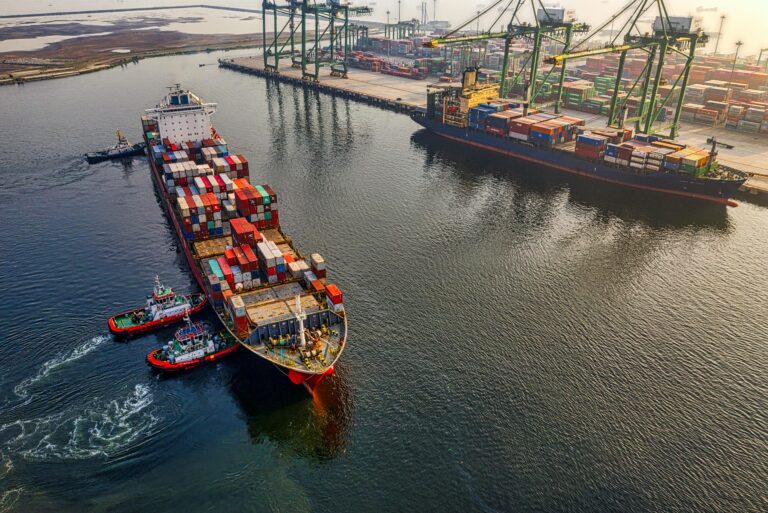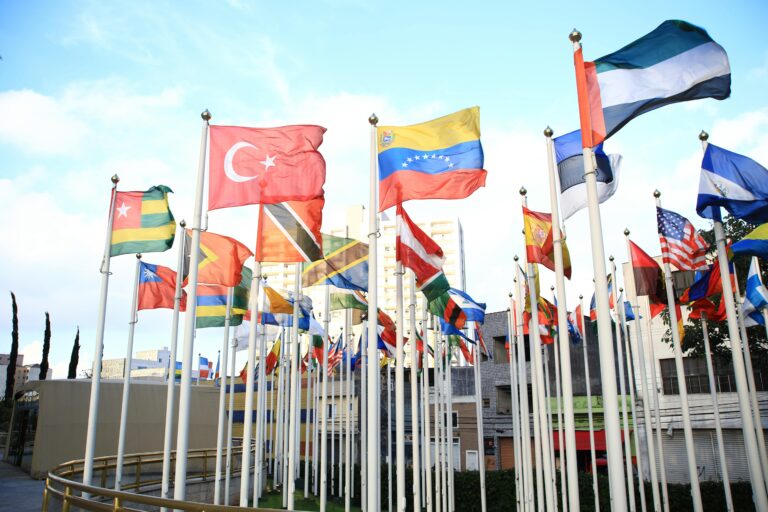Multi-local ecommerce is complex but without it, brands and retailers risk losing customers and revenue. In this rapidly changing commerce environment, it’s essential to understand the nuances of individual markets in order to meet and exceed customer expectations.
If the pandemic-driven rise of ecommerce proved anything, it is that the world can be a very small place. Whereas brick-and-mortar stores in localised locations were once a brand’s bread and butter, ecommerce opened a whole new international marketplace. Ecommerce allows brands to sell anywhere, to anyone, no matter where in the world they live.
The result, of course, has been revolutionary. Ecommerce completely changed the face of retail and how brands market themselves to global consumers. It reshaped how brands and consumers interact by putting customer wants and needs at centre stage. Consumers loved the enhanced personalised customer experiences and the ability to buy products from anywhere in the world. Best of all, it gave any brand selling DTC a chance to compete in the lucrative international marketplace.
Beyond Cross-Border: True Localisation
Global consumers are making greater demands of brands serving them, regardless of where they are headquartered or importing their products. Simple cross-border solutions can translate a site, convert currency and accept payments. Localisation requires a customer experience on par with domestic distributors. That means faster delivery times, lower shipping costs and forgiving return policies. No matter where they live or what language they speak, consumers will abandon a brand that does not meet their expectations. Brands embracing multi- and omnichannel distribution need to be multi-local to truly deliver comparable experiences in as many markets as possible.
What Is Ecommerce Localisation?
Ecommerce localisation is when brands adapt their online presence to the languages and cultures of every new global market. Localisation aims to provide international buyers with a domestic-equivalent online shopping experience nearly identical to their local online journey. In essence, the goal of localisation is to make a brand’s website look like it was made by locals, for locals.
More Than Simple Translation
Enterprise ecommerce may mistakenly think localisation is as easy as translating website content into foreign languages and installing a currency exchange widget on their ecommerce DTC platform. However, effective localisation is much more than translating text from one language to another. It is about translating culture.
Localisation touches everything from language and graphics to measurement units, currency, customer service, models, humour, colours, videos and more. Ecommerce localisation also includes marketing activities like ads, emails, product descriptions and social media designed to attract global customers.
Nike is the gold standard of how to do localisation right. Nike shoppers in Paris will see product offerings specific to French consumers. Written content and product descriptions are also in French. Similarly, visitors to Nike in Taiwan will see content in Chinese/Mandarin and product offerings centred around Taiwanese markets. Graphics and visuals will have a regional and cultural look and feel. Importantly, product pricing will be in local currencies.
Benefits of Localisation
Localisation and cross-border DTC ecommerce gives brands many benefits that improve customer satisfaction and website usability, decrease cart abandonment, increase conversions and boost revenue. Some of those benefits include:
- Improved global reach. A broader global audience and increased sales and conversions are the key benefits of cross-border ecommerce. With the right localisation tactics in place, brands can double their audience practically overnight. Making foreign customers feel right at home will also increase consumer trust and keep customers coming back for more.
- Drives better online search results. Localising an online presence is not limited to what customers can read on a website. Keywords, metadata and hreflang tags can be localised to improve global SEO efforts and drive global traffic to an ecommerce website. Once there, global customers will benefit from an enhanced user experience and content that speaks directly to them.
- Stronger brand consistency. Translating websites for international markets gives brands complete control of messaging, delivering consistent brand experiences across all markets. It ensures that content and messaging are fully understood and communicated as intended. Localisation takes this one step further by accounting for each geo-location’s cultural nuances and preferences, ensuring brand consistency and improved brand image.
- Consumers prefer their native language. Findings from CSA Research show that 65% of global consumers prefer buying from online stores selling in their native language. However, many studies show that more than 50% of ecommerce customers will only shop from sites in their own language. French, German and Turkish customers prefer buying in their mother tongue the most.
- Localised ads get more clicks. Localising marketing strategies can also produce positive results. According to the research, advertising works best when it is localised. Using the targeted country’s language instead of only English brings 86% more clicks.
- Capitalise on local holidays. Most countries celebrate holidays that are unique to their culture. For instance, Singles Day is one of the year’s biggest online shopping days in China, bringing in more revenue than Black Friday and Cyber Monday combined. Diwali in India, Ramadan in the Middle East, Mexico’s El Buen Fin and Australia’s Click Frenzy are also major regional shopping events. Running special promotions for these holidays is an ideal way to maximise global sales.
What Is Multi-Local Ecommerce?
At its core, multi-local ecommerce is the next level of ecommerce localisation. The multi-local ecommerce experience comes in response to rising customer expectations for omnichannel shopping experiences that span multiple channels.
Offering true multi-local ecommerce shopping experiences requires an approach that treats each market differently and localises each part of the buying experience. This includes payment methods, currency, local banking, taxes, social media, customer support and order management, and many other aspects of ecommerce.
Transforming an online storefront into a true multi-local ecommerce experience can be complex and requires a great deal of planning and vision. Here’s a brief overview of important ecommerce practices and how they can be localised:
Customer Support
Localised customer service strategies are just as important for a brand’s global markets as it is for its domestic market. This includes providing localised phone numbers, email systems (sent in local languages during local business hours) and a toll-free number. Additionally, brands need to localise all email follow-ups and customer-facing marketing messages for an optimal customer experience. The channels consumers use to communicate with brands must also be considered.
Communication Channels
Preferred communication channels vary widely from country to country. While phone and voice messages are the most popular communication option, live chat is gaining in global popularity. However, chatbots must be able to understand and respond to multiple languages and cultures to be effective on a multi-local ecommerce scale. Thanks to advancements in AI, today’s chatbots can be easily localised to suit a target demographic’s local language and navigate regionalisms.
Payments
While taking domestic payments is easy, accepting international payment methods is much more complex. Ecommerce brands selling in global markets need to offer customers multiple payment options to support regional methods. However, payment gateways vary by nation, region and accepted currencies.
A typical payment processor provides coverage for only one country or region. This means businesses need multiple international payment gateways that offer multi-currency payments and an interface with multiple languages. They also need a gateway that can convert their website’s currency into local currency.
Creating the infrastructure to localise payments is costly and challenging but is necessary if brands are going to sell globally. Customers prefer to shop using their preferred payment options and in local currencies. Brands that fail to meet these consumer expectations cannot compete in a highly competitive foreign marketplace.
Checkout Pages
The checkout experience must be as localised as the rest of an ecommerce website. Too many businesses make the mistake of redirecting their checkout pages away from local sites back to their main website. Being sent to an unfamiliar site just before making a purchase is enough to prompt customers to abandon a cart. To that end, customers must be able to complete the checkout process in their local language without leaving the localised site. The shopping basket should also be in the local language, with local currency and popular payment options prominently displayed.
Taxes
Adding to the complexities of foreign payments, most payment processors do not handle anything sales tax related. It is the responsibility of the ecommerce company to determine all sales taxes on foreign sales. Fortunately, tax calculation software that integrates with the payment gateway can help ecommerce companies calculate the correct amount of taxes.
The Bottom Line
Achieving a true multi-local ecommerce experience that meets customer demands can be too complex for brands to handle on their own. While localisation offers undeniable benefits, getting it wrong can negate any of the advantages. This is why brands looking to enter a global marketplace should consider partnering with ESW, a global leader in cross-border ecommerce.
Contact us today to learn how ESW can help your brand achieve accelerated speed-to-market around the world.





